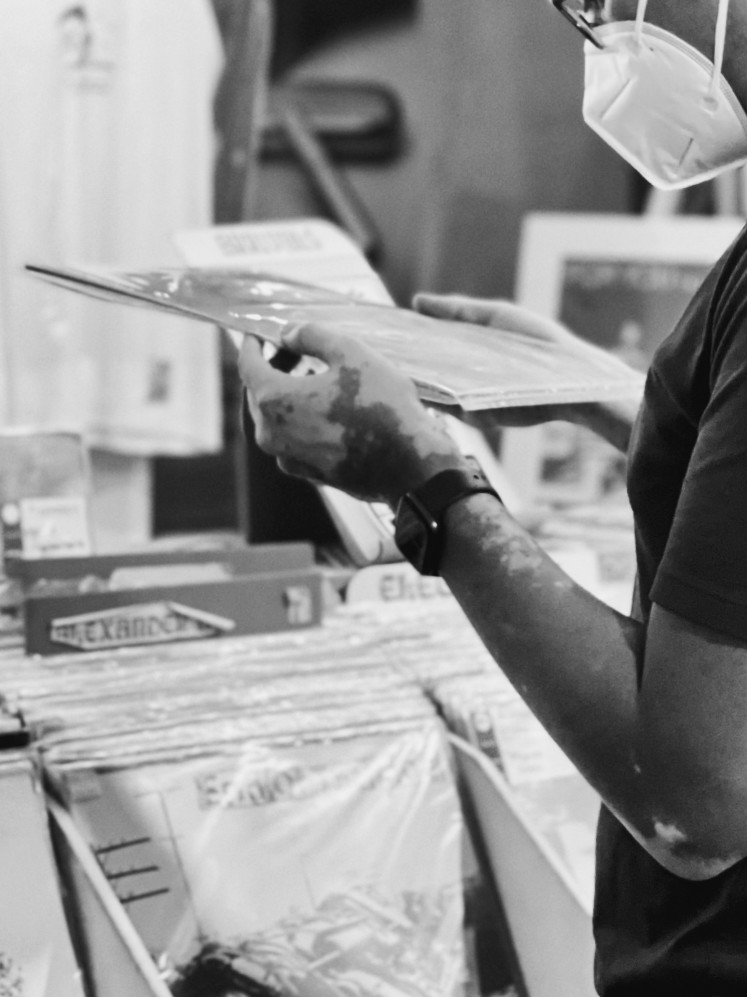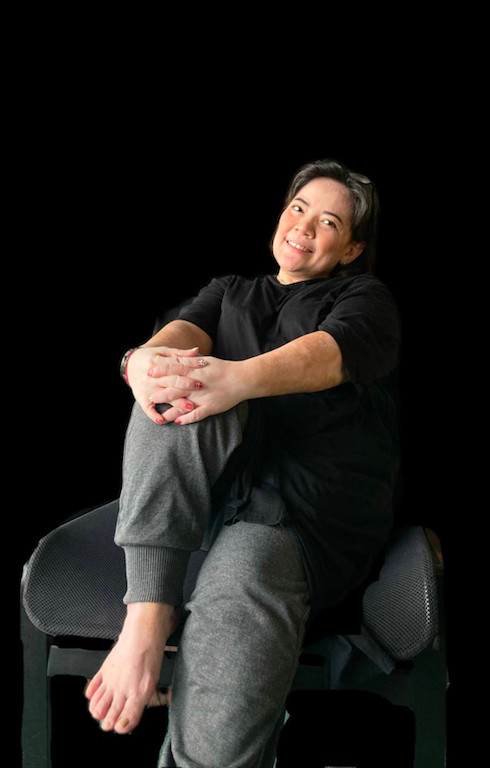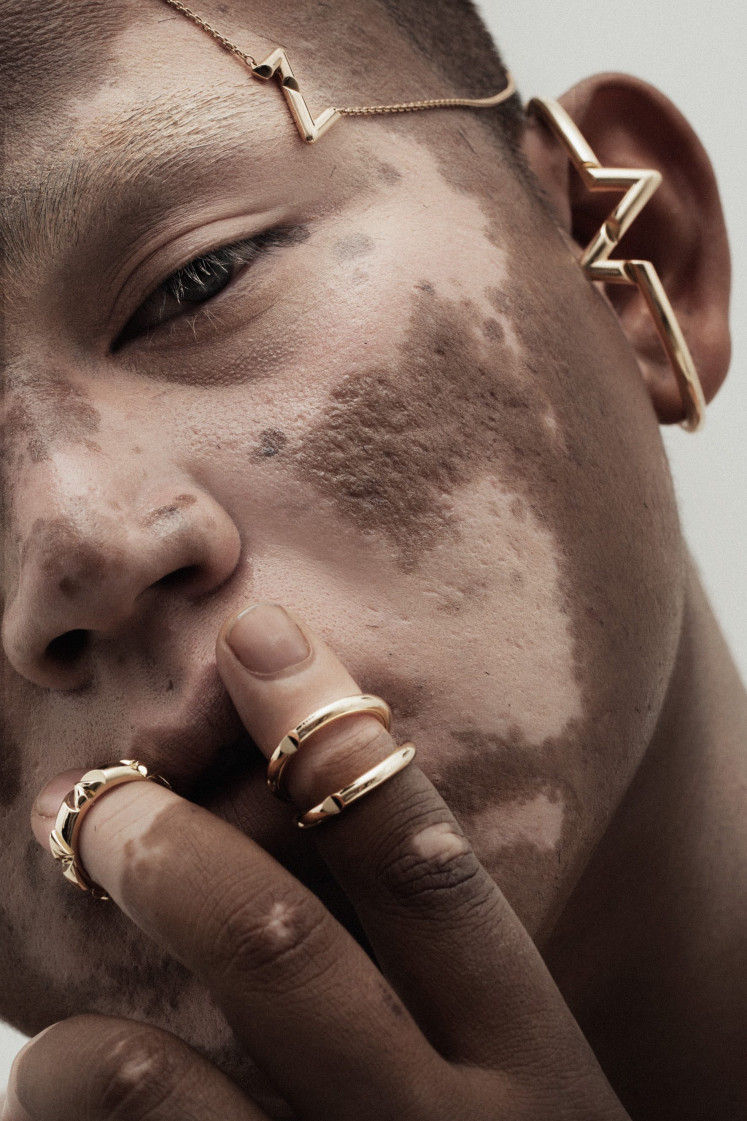Popular Reads
Top Results
Can't find what you're looking for?
View all search resultsPopular Reads
Top Results
Can't find what you're looking for?
View all search resultsIndonesians with vitiligo seek visibility
Change text size
Gift Premium Articles
to Anyone
Indonesians who live with the skin condition known as vitiligo share their struggles and hopes.
Active and joyful, four-year-old Noni from Bandung, who has taken a pseudonym for this article, is living her best life. But on the back of her head, several white strands stand in stark contrast to her jet black hair, prompting some to call her “zebra”. Noni takes it in stride. In fact, she thinks the stripes give her a cool look.
Her mother, Sylvia Wiharja, 32, on the other hand, finds it hard not to worry.
Noni has a rare skin condition called vitiligo. Reiva Farah, a pediatric dermatologist, and Panji Respati, a resident doctor, both at Hasan Sadikin Hospital (RSHS) in Bandung, explained that vitiligo was a condition in which the skin loses pigment because it has lost the pigment-producing melanosite cell.
Many things can cause vitiligo, including autoimmune conditions, genetics, exposure to whitening substances or the Koebner effect, in which a wound on the skin fails to repigment.
Noni is not alone. Globally, as much as 2 percent of the population has this skin condition. Indonesia has an identified 0.5 to 1 percent of the population with the condition.
Contrast: people who have darker skin tend to have their vitiligo more visible to others. (Courtesy of Gregorius Giovani) (Courtesy of Gregorius Giovani/Courtesy of Gregorius Giovani)More than two colors
Zsazsa Caesar, a 27-year-old model, grew up with vitiligo. White patches exist on her face, chest, hands and knees. She is confident about herself and is an advocate for increasing the representation of people with vitiligo in Indonesia. When she was a child, however, things were different.
Zsazsa was a cheerful child. But things changed in the fifth grade when classmates started to tease her about her knees, where the first white patches first appeared. Zsazsa began wearing stockings to school to cover the white patches.
“It was not because we [Zsazsa and her parents] were ashamed of my skin color, but it was rather to make me feel more comfortable. My parents also talked to my teachers about the bullying. It eventually stopped, but I knew it would happen again once I moved to a new environment,” she said.
While it does not affect organs beyond the skin, Reiva said that having vitiligo could affect one’s quality of life, especially one’s mental state. According to her, most people with vitiligo live in a vicious cycle. They suffer from stress because of the condition, causing more white patches to appear. Add to that the bullying, intrusive questions and stares from strangers.
Others, like Honey Virginia, have made peace with their condition. The 48-year-old has accepted the spread of her vitiligo. She now has light colored skin with small, darker patches throughout. Early on, she tried to cure her vitiligo but she said it took up too much of her time. As a single mother, she had to focus on her family.
“I decided to let it spread. I mean, a lot of women right now want to have very fair, white skin, but God let me have it without even having to wear any products. So why don’t I embrace it instead? I live up to my bule [Western] name, Honey,” she joked.
Being happy: Honey chose to be happy with her condition, as she let her vitiligo spread. (Courtesy of Gabriela Astrid) (Courtesy of Gabriela Astrid/Courtesy of Gabriela Astrid)Itang Setiawan, 27, another model, chose to live with the two colors. His vitiligo is most visible on his face, as the area around his eyes, nose and mouth is white, framed by his brown skin.
Itang found out he had vitiligo when he was 17 years old and dreamed of becoming a pastry chef. Yet, his new skin color got him teased in the kitchen and caused him to get unwanted questions. He wore makeup to cover the white patches that first appeared near his right lip, only to be teased again for being a man who wore makeup.
Eventually, Itang realized he couldn’t keep hiding his condition and would have to live with it. He used to shut himself in his room, had few friends and did not hang out with others. He got tired living underneath his makeup, and wanted to pursue what he called “vitiligo freedom”. So he put away his makeup and showed the world his true colors as a model.
Living with vitiligo: Itang has vitiligo mostly on his face and his fingers, which does not stop him from living the most of his life. (Courtesy of Hendra Kusuma) (Courtesy of Hendra Kusuma/Courtesy of Hendra Kusuma)Love and support
The prerequisite for people with vitiligo to reach what Itang calls “vitiligo freedom” is accepting and embracing who they are. While acceptance comes from within, support from the outside can help facilitate the process.
Fariz, a 30-year-old accountant from Jakarta has a boyfriend with vitiligo.
“I might not know everything that happened to my boyfriend when he was a child or when he was growing up. But I will always try to encourage him to not think about it too much and see the bright side,” Fariz said.
While Fariz’s words may sound obvious, his boyfriend said it meant a lot for his self-esteem. Fariz’s boyfriend started to see vitiligo not simply as a disease but as a symbol of diversity.
Sylvia said she often shed tears when she thought of her daughter or prayed for her. Nevertheless, she is grateful that people with vitiligo are now better represented on the public stage. Sylvia occasionally shows pictures of Zsazsa and Itang to her daughter, to show her that she is not alone.
True colors
Even though representation of people with vitiligo has been increasing, Zsazsa and Itang feel it is still not enough, so they founded VitiPower, a Telegram community that now has 160 members who all have vitiligo. They wanted to create a safe space.
For people like Honey, discovering Zsazsa on TikTok and later joining VitiPower helped her to no longer feel alone.
“I really hope that through this community, people with vitiligo from all over the country will realize that they are not alone. I hope we can be more viral on social media. I am so proud that Zsazsa and Itang have opened their hearts for us,” Honey said.













